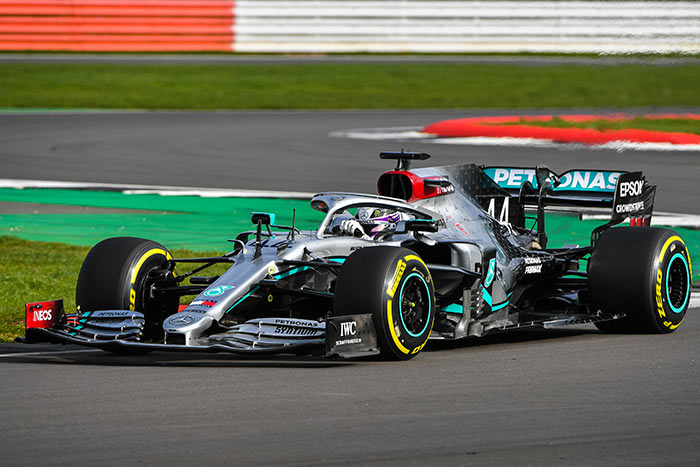aral wrote: ↑20 Feb 2020, 14:06
It is clearly in contravention of the rules regarding to fixed suspension units and also that suspension cannot be adjusted by the driver.
Interesting opinion!
10.2 Suspension geometry :
10.2.1 With the steering wheel fixed, the position of each wheel centre and the orientation of its
rotation axis must be completely and uniquely defined by a function of its principally
vertical suspension travel, save only for the effects of reasonable compliance which does
not intentionally provide further degrees of freedom.
10.2.2 Any powered device which is capable of altering the configuration or affecting the
performance of any part of any suspension system is forbidden.
10.2.3 No adjustment may be made to any suspension system while the car is in motion
10.4 Steering :
10.4.1 Any steering system which permits the re‐alignment of more than two wheels is not
permitted.
10.4.2 Power assisted steering systems may not be electronically controlled or electrically powered.
No such system may carry out any function other than reduce the physical effort required to
steer the car.
10.4.3 No part of the steering wheel or column, nor any part fitted to them, may be closer to the
driver than a plane formed by the entire rear edge of the steering wheel rim. All parts fixed to
the steering wheel must be fitted in such a way as to minimise the risk of injury in the event of
a driver’s head making contact with any part of the wheel assembly.
10.4.4 The steering wheel, steering column and steering rack assembly must pass an impact test,
details of the test procedure may be found in Article 16.5
https://www.fia.com/file/78015/download/26184
IMO:
The suspension does not change
when the steering is fixed - tick.
The steering adjusts toe on no more than two wheels - tick.
No part of the steering system is closer to the driver than the rear edge of the steering wheel - tick.
Complies with the letter of the rules, since 10.4.1 specifically allows the steering system to adjust the toe of two wheels (therefore 10.2.3 does not apply IMO), however it could be banned as a moveable aerodynamic device under 3.8:
3.8 Aerodynamic influence
With the exception of the parts described in Articles 11.4, 11.5 and 11.6, and the rear view
mirrors described in Article 14.3, any specific part of the car influencing its aerodynamic
performance :
a) Must comply with the rules relating to bodywork.
b) Must be rigidly secured to the entirely sprung part of the car (rigidly secured means not
having any degree of freedom).
With the exception of the driver adjustable bodywork described in Article 3.6.8 (in addition to
minimal parts solely associated with its actuation) and the parts described in Articles 11.4, 11.5
and 11.6, any specific part of the car influencing its aerodynamic performance must remain
immobile in relation to the sprung part of the car.
Any device or construction that is designed to bridge the gap between the sprung part of the
car and the ground is prohibited under all circumstances.
No part having an aerodynamic influence and no part of the bodywork, with the exception of
the parts referred to in Articles 3.7.10, 3.7.11 and 3.7.12, may under any circumstances be
located below the reference plane.
With the exception of the parts necessary for the adjustment described in Article 3.6.8, any car
system, device or procedure which uses driver movement as a means of altering the
aerodynamic characteristics of the car is prohibited.
Note 3.6.8 is Drag Reduction System.



